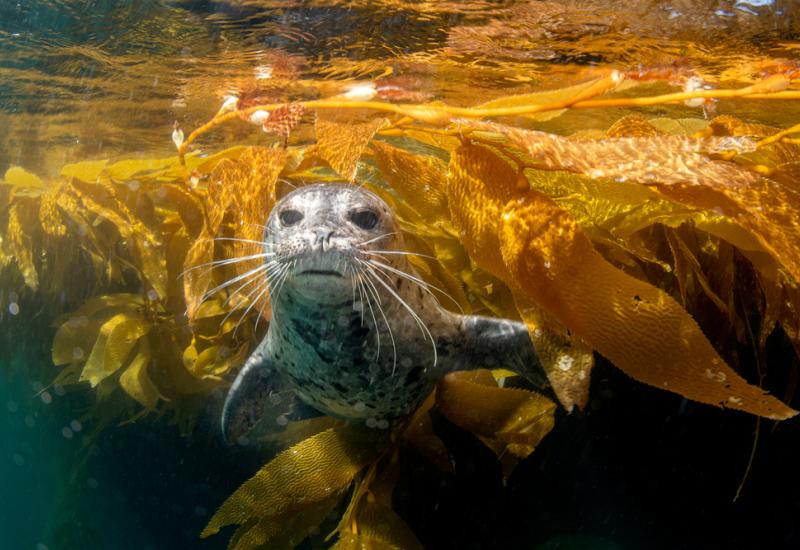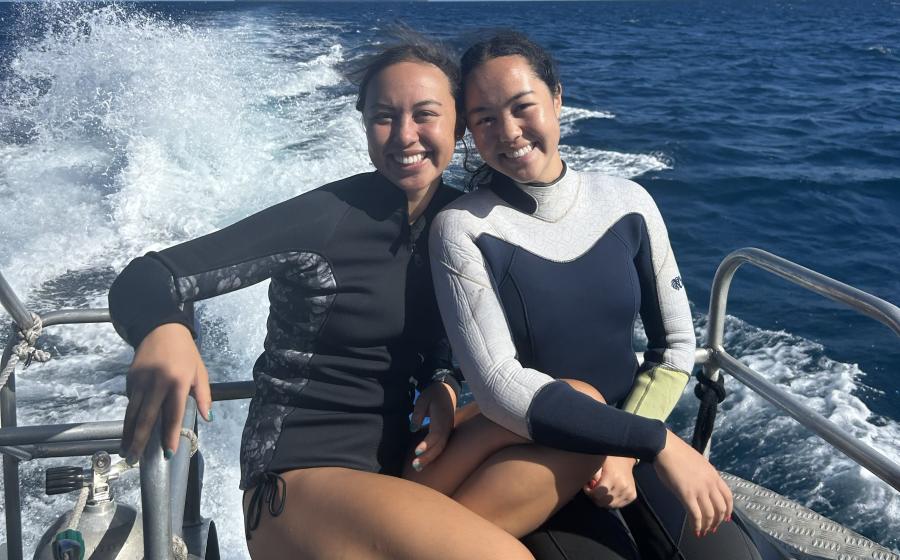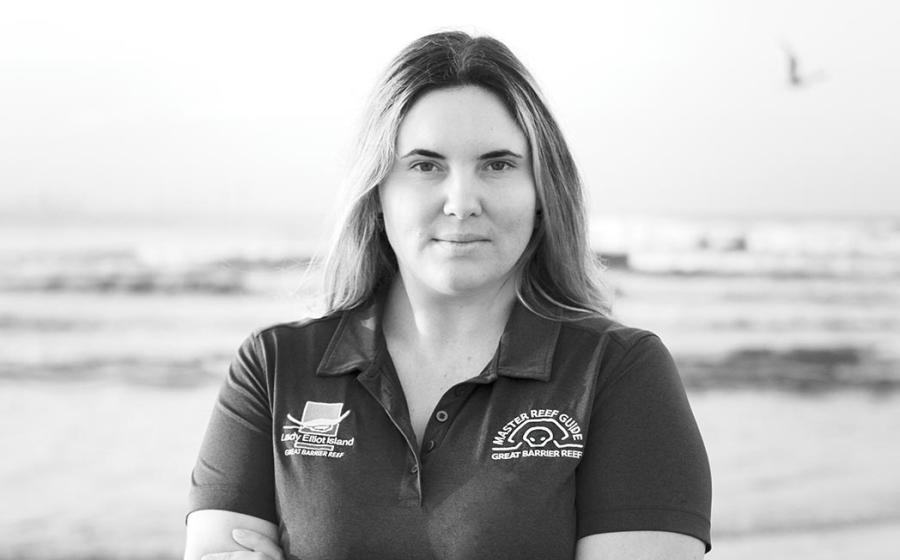Falling for Niagara
By Robert Osborne
Itinerary

Day One: Leave Toronto and head for Fort Erie, where the (1) Niagara River meets Lake Erie. Drift dive the Niagara River. Next item, a little hedonism. At Hillebrand Winery ( www.hillebrand.com ) the sommelier demonstrates the proper way to “humor” the wine — swirling the liquid around in the glass to aerate it and bring out the flavor. At the Reif Estate Winery ( www.reifwinery.com ), learn how to carefully pair artisanal cheeses with wines. Cap the day off with a massive steak dinner at the Cannery and Carriages Dining Room in Niagara-on-the-Lake’s Pillar and Post ( www.vintage-hotels.com ) before bedding down for the night.
Day Two: Start at Port Colborne on (2) Lake Erie. Blast out to the wreck of the C.B. Benson on board Eric Cooper’s rigid-hull inflatable. Time for one circuit of the wreck — find the still-intact wheel and windlass at the stern and parts of the still upright masts. Dive two is on the Tonawanga, but Lake Erie is up to its old tricks — the wind has stirred up the bottom and visibility is restricted to a couple of feet. No visibility, no worries: Head over to Port Dalhousie on Lake Ontario. There’s no wind on this side of the peninsula, and five minutes later you’re moored over the wreck of the Tiller. Finish the day with just enough energy to wolf down a hamburger and a plate of steamed mussels at the Riverbend Inn ( www.riverbendinn.ca ) and collapse into bed.
Day Three: An early rise for the drive back to Toronto, but not before a quick stop at Taylors’ Bakery for hot scones and a couple of pecan tarts.
Nestled serenely between Lake Erie and Lake Ontario on the Canadian side of the border, the Niagara Peninsula is known for its wine, Niagara-on-the-Lake theater and fine dining. But there’s more to this fascinating region than meets the eye — it’s also an area with three different diving experiences all within a half-hour drive of each other.
The journey starts with the mother of all drift dives on the Niagara River. Yes, it’s the same river that eventually spills over the falls; and no, you won’t dive over the falls. Jump in at Fort Erie and rocket along at nearly 4 knots until you run low on air. The trick to survival is keeping your hands in front of you to prevent collisions with rocks that seem to spring up in a fraction of a second. The visibility is surprisingly good and there’s lot of large freshwater fish to see including bass, walleye, lake trout and even the occasional salmon.
Drive 20 minutes down the road from Fort Erie for “experience No. 2” — the wrecks of Lake Erie. You should plan to dive the C.B. Benson, a 136-foot long schooner that sank in 1893 and now sits upright in 77 feet of water; and the Tonawanda — a 200-foot long wooden steamer that went down during a storm in 1870 — to see a massive propeller and engine block. The only drawback to Lake Erie is the volatile nature of the lake — the lake is so shallow the lightest winds can whip it into a frenzy in a matter of minutes. Divers will start out in the morning with flat, calm conditions and by midday be fighting 6-foot swells. That also means the visibility can be tricky. You’ll start one dive with 50 feet of visibility and an hour later will be diving with just 5 feet.
The third experience is diving the deep, cold-water calm of Lake Ontario to explore pristine wrecks — many within minutes from the shore — that date as far back as the 16th century. The jewel in the crown is a wreck known locally as the Tiller. Nobody knows its real name or when it sank, but the nickname comes from the steering tiller on the stern, which means it was built sometime in the later 16th century, before ships switched over to wheels for steering. It’s one of the deeper wrecks on the Niagara Peninsula itinerary, at approximately 110 feet, but as a result it’s beautifully preserved. Visibility is 60 feet, and if you’ve got the certification, it’s possible to penetrate this wreck.
With careful planning, you could run through all three diving experiences in a handful of days, which leaves you plenty of surface time to explore “Canada’s Napa Valley.” The Niagara region boasts dozens of wineries, world-class restaurants and some of the most elegant hotels in the country. Niagara-on-the-Lake is home to the Shaw Festival — featuring the works of playwright George Bernard Shaw — an acclaimed theater experience that draws people from around the world. The only problem with a Niagara Peninsula itinerary is: How much can you cram into one weekend?
Need to Know:
Getting There: The best way to reach the Niagara Peninsula is via Toronto or Buffalo. From Toronto it’s about an hour’s drive on the Queen Elizabeth Way. It’s an even shorter drive from Buffalo, about 40 minutes (I-190 to the border and then Highway 405).
When to Go: Diving conditions in both lakes are best in the spring and fall. The Niagara River is good to dive from early June through late October.
Conditions: Lake Erie is a morning dive — you just can’t count on the weather in the afternoon. The Niagara River and Lake Ontario are open all day. All three bodies of water will range in temperature between 40 and 50 degrees F during the diving season.
Operators: Dan’s Dive Shop ( www.dansdiveshop.ca ) in St. Catharines, Ontario, has been around for 35 years and offers regular trips to the Niagara River and Lake Erie. Aquaholic Dive Charters ( www.aquaholic.ca ) runs regular boat trips to both Lake Erie and Lake Ontario.
Price Tag: Dan’s Dive Shop charges $85 for a two-tank dive; Aquaholics is $75. The Riverbend Inn is $250 per night, but there are dozens of hotels and bed-and-breakfasts from $50 to $100 a night. For a complete list, try www.tourismniagara.com
By Robert Osborne
Itinerary

Day One: Leave Toronto and head for Fort Erie, where the (1) Niagara River meets Lake Erie. Drift dive the Niagara River. Next item, a little hedonism. At Hillebrand Winery ( www.hillebrand.com ) the sommelier demonstrates the proper way to “humor” the wine — swirling the liquid around in the glass to aerate it and bring out the flavor. At the Reif Estate Winery ( www.reifwinery.com ), learn how to carefully pair artisanal cheeses with wines. Cap the day off with a massive steak dinner at the Cannery and Carriages Dining Room in Niagara-on-the-Lake’s Pillar and Post ( www.vintage-hotels.com ) before bedding down for the night.
Day Two: Start at Port Colborne on (2) Lake Erie. Blast out to the wreck of the C.B. Benson on board Eric Cooper’s rigid-hull inflatable. Time for one circuit of the wreck — find the still-intact wheel and windlass at the stern and parts of the still upright masts. Dive two is on the Tonawanga, but Lake Erie is up to its old tricks — the wind has stirred up the bottom and visibility is restricted to a couple of feet. No visibility, no worries: Head over to Port Dalhousie on Lake Ontario. There’s no wind on this side of the peninsula, and five minutes later you’re moored over the wreck of the Tiller. Finish the day with just enough energy to wolf down a hamburger and a plate of steamed mussels at the Riverbend Inn ( www.riverbendinn.ca ) and collapse into bed.
Day Three: An early rise for the drive back to Toronto, but not before a quick stop at Taylors’ Bakery for hot scones and a couple of pecan tarts.
Nestled serenely between Lake Erie and Lake Ontario on the Canadian side of the border, the Niagara Peninsula is known for its wine, Niagara-on-the-Lake theater and fine dining. But there’s more to this fascinating region than meets the eye — it’s also an area with three different diving experiences all within a half-hour drive of each other.
The journey starts with the mother of all drift dives on the Niagara River. Yes, it’s the same river that eventually spills over the falls; and no, you won’t dive over the falls. Jump in at Fort Erie and rocket along at nearly 4 knots until you run low on air. The trick to survival is keeping your hands in front of you to prevent collisions with rocks that seem to spring up in a fraction of a second. The visibility is surprisingly good and there’s lot of large freshwater fish to see including bass, walleye, lake trout and even the occasional salmon.
Drive 20 minutes down the road from Fort Erie for “experience No. 2” — the wrecks of Lake Erie. You should plan to dive the C.B. Benson, a 136-foot long schooner that sank in 1893 and now sits upright in 77 feet of water; and the Tonawanda — a 200-foot long wooden steamer that went down during a storm in 1870 — to see a massive propeller and engine block. The only drawback to Lake Erie is the volatile nature of the lake — the lake is so shallow the lightest winds can whip it into a frenzy in a matter of minutes. Divers will start out in the morning with flat, calm conditions and by midday be fighting 6-foot swells. That also means the visibility can be tricky. You’ll start one dive with 50 feet of visibility and an hour later will be diving with just 5 feet.
The third experience is diving the deep, cold-water calm of Lake Ontario to explore pristine wrecks — many within minutes from the shore — that date as far back as the 16th century. The jewel in the crown is a wreck known locally as the Tiller. Nobody knows its real name or when it sank, but the nickname comes from the steering tiller on the stern, which means it was built sometime in the later 16th century, before ships switched over to wheels for steering. It’s one of the deeper wrecks on the Niagara Peninsula itinerary, at approximately 110 feet, but as a result it’s beautifully preserved. Visibility is 60 feet, and if you’ve got the certification, it’s possible to penetrate this wreck.
With careful planning, you could run through all three diving experiences in a handful of days, which leaves you plenty of surface time to explore “Canada’s Napa Valley.” The Niagara region boasts dozens of wineries, world-class restaurants and some of the most elegant hotels in the country. Niagara-on-the-Lake is home to the Shaw Festival — featuring the works of playwright George Bernard Shaw — an acclaimed theater experience that draws people from around the world. The only problem with a Niagara Peninsula itinerary is: How much can you cram into one weekend?
Need to Know:
Getting There: The best way to reach the Niagara Peninsula is via Toronto or Buffalo. From Toronto it’s about an hour’s drive on the Queen Elizabeth Way. It’s an even shorter drive from Buffalo, about 40 minutes (I-190 to the border and then Highway 405).
When to Go: Diving conditions in both lakes are best in the spring and fall. The Niagara River is good to dive from early June through late October.
Conditions: Lake Erie is a morning dive — you just can’t count on the weather in the afternoon. The Niagara River and Lake Ontario are open all day. All three bodies of water will range in temperature between 40 and 50 degrees F during the diving season.
Operators: Dan’s Dive Shop ( www.dansdiveshop.ca ) in St. Catharines, Ontario, has been around for 35 years and offers regular trips to the Niagara River and Lake Erie. Aquaholic Dive Charters ( www.aquaholic.ca ) runs regular boat trips to both Lake Erie and Lake Ontario.
Price Tag: Dan’s Dive Shop charges $85 for a two-tank dive; Aquaholics is $75. The Riverbend Inn is $250 per night, but there are dozens of hotels and bed-and-breakfasts from $50 to $100 a night. For a complete list, try www.tourismniagara.com










